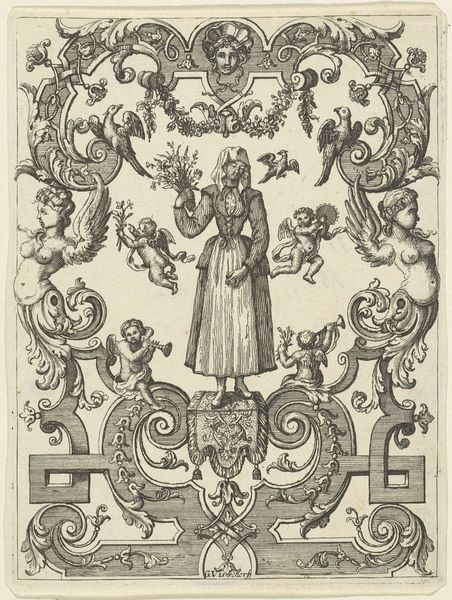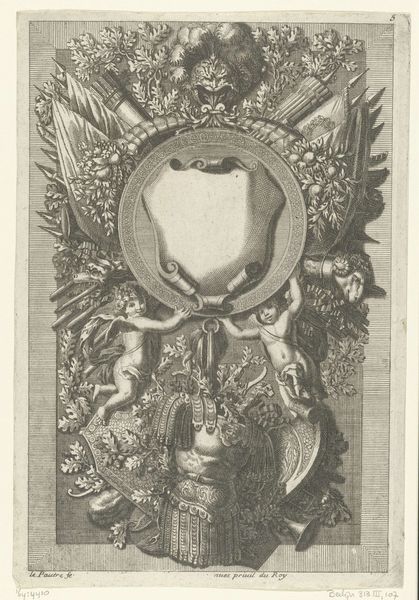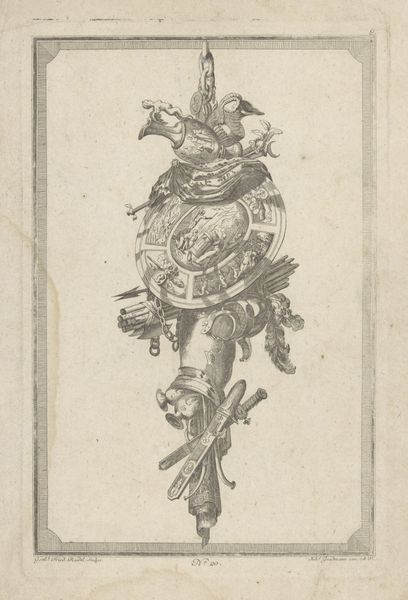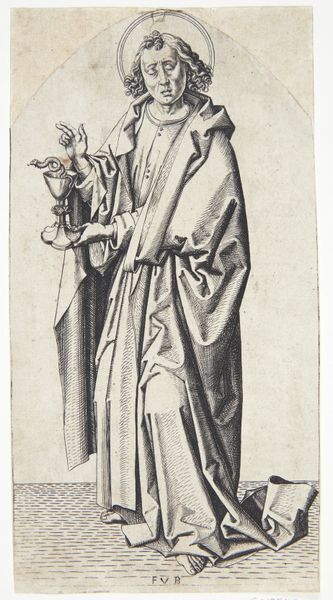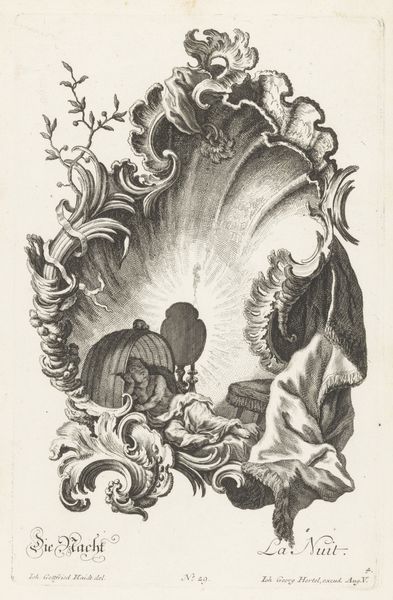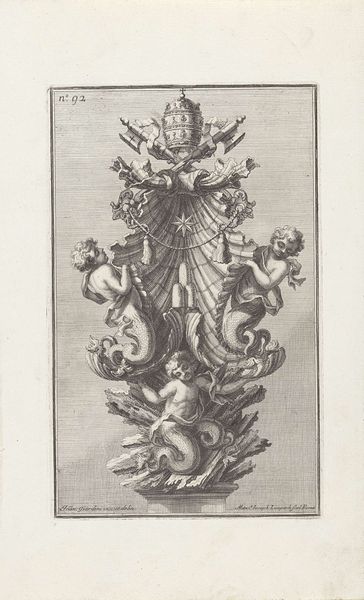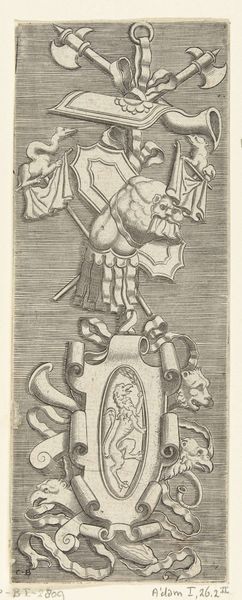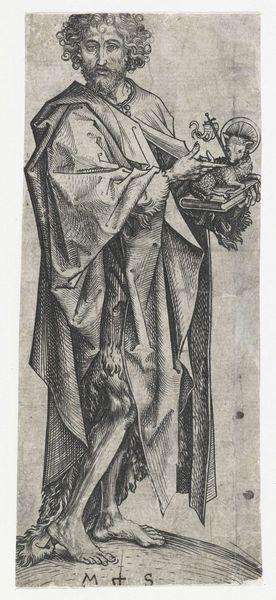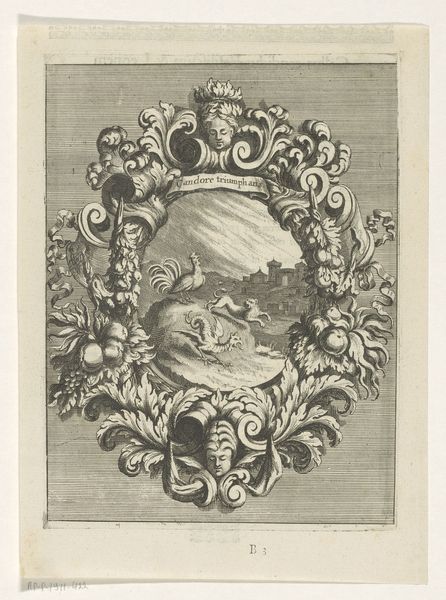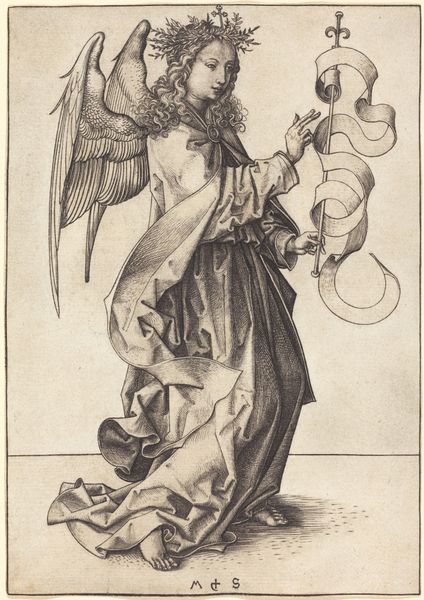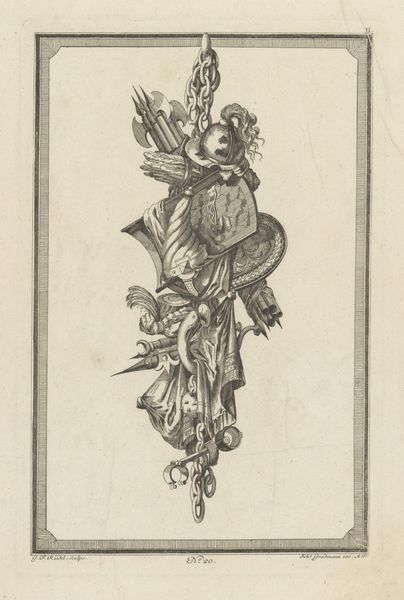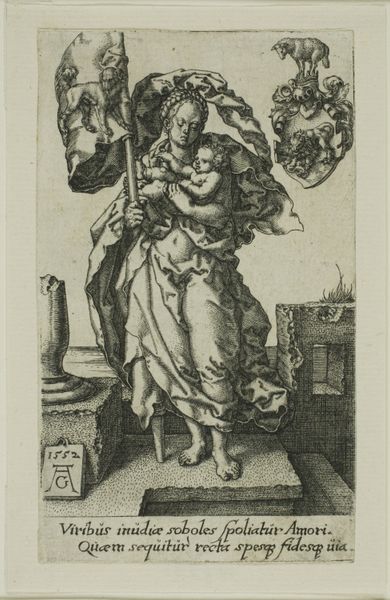
drawing, print, engraving
#
portrait
#
drawing
#
allegory
# print
#
mannerism
#
figuration
#
pencil drawing
#
france
#
surrealism
#
history-painting
#
academic-art
#
engraving
Dimensions: 6 9/16 x 4 3/4 in. (16.67 x 12.07 cm) (image, sheet)
Copyright: Public Domain
Editor: So this engraving is called "Masque Head" by Pierre Milan, dating back to the 1550s. The level of detail is just astonishing, especially in the drapery. It feels very symbolic, almost like a coded message. How do you interpret this work? Curator: I see it as a reflection of the Mannerist obsession with allegory and learned wit within court culture. These "masque heads" weren't just whimsical designs; they were potent symbols of power, intellect, and the patron's ability to decode complex visual language. Editor: So the elite audiences understood this language? How does it work? Curator: Precisely. The bizarre juxtaposition of elements—cherubs, a lion, and foliage—on the helmet indicates a familiarity with classical mythology and contemporary courtly traditions. Prints like this circulated amongst the elite. Who controlled the imagery and its dissemination held a significant influence on constructing reputation and reinforcing social hierarchies. Editor: Fascinating! So it's about power and knowing the inside jokes? Curator: Exactly. This particular image raises questions about the performative aspects of power. What does it mean to construct authority through elaborate masks and allegorical references? Consider how this image would have been perceived within a 16th-century French court setting, considering political rivalries, religious tensions, and the constant need to assert legitimacy. Editor: I see how this speaks to the social function of art back then, shaping opinions within a specific social and political landscape. Thanks! Curator: Absolutely. Examining the "Masque Head" helps us think critically about the relationship between art, power, and the creation of cultural meaning in historical contexts. I learned a lot hearing your interpretations too!
Comments
minneapolisinstituteofart almost 2 years ago
⋮
Some Renaissance observers believed that original displays of fantasia, or imagination, were the true mark of an artist. In that spirit, Pierre Milan molded a bizarre collection of motifs into a centurion headpiece. A homunculous rides a crouching beast, and a lifeless piece of angel head statuary lies in the vicinity of the centurion's ear. Milan's forceful contours and decisive linework made him the leading Parisian engraver of his day. Still, he was forever in debt. He would pay his creditors in prints, and at one point owed an estimated 120,000 impressions to repay a loan.
Join the conversation
Join millions of artists and users on Artera today and experience the ultimate creative platform.
